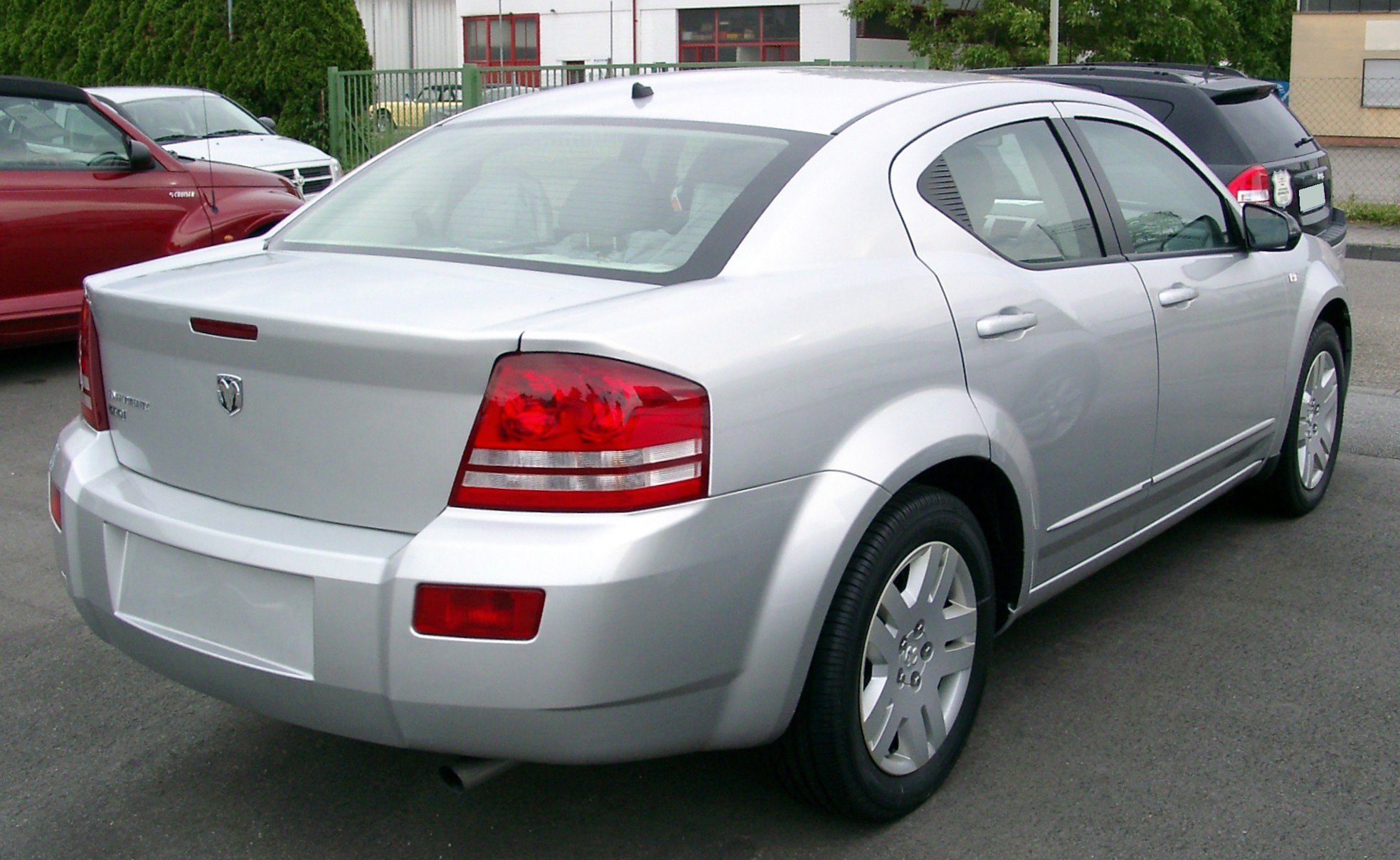
Reaching 250,000 miles on any vehicle is a significant milestone that few drivers achieve. For a Ford Explorer, pushing past that mark isn’t merely a stroke of luck; it’s a testament to intentional effort, a disciplined maintenance routine, and a deep understanding of how to sustain a vehicle over its entire lifespan. The Ford Explorer has rightfully earned a reputation for durability, inspiring many owners to proudly drive their SUVs well beyond typical limits. Yet, regardless of the robust engineering, its long-term success fundamentally relies on consistent, intelligent care.
Owners who successfully keep their Explorers performing for such an extended duration often share common practices. They don’t just react to problems as they arise; instead, they proactively anticipate and prevent issues. They possess a keen ear for odd noises, a watchful eye for small leaks, and an immediate response to dashboard warnings. They understand that early intervention is key to avoiding major, more expensive headaches.
Most importantly, these dedicated owners approach their vehicle as a substantial, long-term investment. This crucial shift in mindset fosters a commitment to learning about the Explorer’s unique requirements and consistently developing solid routines around its service and care. It’s not one grand action that propels an Explorer past 250,000 miles, but rather a hundred small, consistent decisions made over time. Paying close attention to these decisions is where the true reward of extended vehicle life lies.

1. **Regular Oil and Fluid Changes**One of the most foundational and critical practices for keeping a Ford Explorer running strong is the consistent regimen of oil and fluid changes. While this might appear basic, it is frequently underestimated or neglected by owners once their vehicle accumulates significant mileage. Engine oil is indispensable for ensuring all internal moving parts operate smoothly, and neglecting this task can precipitate premature wear, overheating, or complete engine failure. An Explorer engine receiving regular oil changes every 3,000 to 5,000 miles will almost invariably outlast one subjected to prolonged intervals.
Transmission fluid represents another vital component in vehicle longevity. The Ford Explorer, especially earlier models, can place considerable stress on its transmissions. Regular fluid changes are instrumental in mitigating the accumulation of harmful particles that contribute to friction and wear within the system. Some drivers hesitate to flush the transmission once mileage climbs, fearing it could dislodge debris. However, a well-maintained Explorer with routine fluid changes is far less likely to face such problems.
Coolant, though frequently overlooked, holds equivalent importance to oil and transmission fluid. A properly functioning cooling system is indispensable for preventing the engine from reaching dangerously high temperatures, safeguarding against critical failures like cracking gaskets. Even brake fluid and power steering fluid have their place. Skipping any part of this fluid maintenance chain puts extra stress on the rest, shortening the vehicle’s life and compromising safety. Proactive care for all fluids is paramount.
Car Model Information: 2021 Ford Explorer XLT
Name: Ford Explorer
Caption: Sixth-generation Ford Explorer
Manufacturer: Ford Motor Company
Production: 1990–present
ModelYears: 1991–present
Class: unbulleted list
Chassis: unbulleted list
Predecessor: Ford Bronco II
Successor: Ford Territory (Australia)
Categories: 2000s cars, 2010s cars, 2020s cars, All-wheel-drive vehicles, All Wikipedia articles in need of updating
Summary: The Ford Explorer is a range of SUVs manufactured by the Ford Motor Company since the 1991 model year. The first five-door SUV produced by Ford, the Explorer, was introduced as a replacement for the three-door Bronco II. As with the Ford Ranger, the model line derives its name from a trim package previously offered on Ford F-Series pickup trucks. As of 2020, the Explorer became the best-selling SUV in the American market.
Currently in its sixth generation, the Explorer has featured a five-door wagon body style since its 1991 introduction. During the first two generations, the model line included a three-door wagon (directly replacing the Bronco II). The Ford Explorer Sport Trac is a crew-cab mid-size pickup derived from the second-generation Explorer. The fifth and sixth generations of the Explorer have been produced as the Ford Police Interceptor Utility (replacing both the Ford Crown Victoria Police Interceptor and the Ford Police Interceptor Sedan).
The Explorer is slotted between the Ford Edge and Ford Expedition within North America’s current Ford SUV range. The model line has undergone rebadging several times, with Mazda, Mercury, and Lincoln each selling derivative variants. Currently, Lincoln markets a luxury version of the Explorer as the Lincoln Aviator.
For the North American market, the first four generations of the Explorer were produced by Ford at its Louisville Assembly Plant (Louisville, Kentucky) and its now-closed St. Louis Assembly Plant (Hazelwood, Missouri). Ford currently assembles the Explorer alongside the Lincoln Aviator and the Police Interceptor Utility at its Chicago Assembly Plant (Chicago, Illinois).
Get more information about: Ford Explorer
Buying a high-performing used car >>>
Brand: Ford Model: Explorer
Price: $25,595 Mileage: 42,720 mi.
Read more about: Beyond the Silent Killer: Crucial High Blood Pressure Warning Signs Starting in Your Neck You Can’t Afford to Miss

2. **Timely Maintenance of Belts and Hoses**Belts and hoses, though not as visually prominent as major components, are nevertheless critical for the uninterrupted operation of your Ford Explorer. A frayed or worn-out belt can leave you stranded as easily as a catastrophic engine failure. The Explorer’s serpentine belt, which drives everything from the alternator to the power steering pump, demands regular inspection. Cracks, frays, or shiny spots are clear warning signs that the belt is nearing its end. Replacing it proactively is a minimal investment compared to the substantial damage and inconvenience its failure can precipitate.
Similarly, hoses are conduits for vital fluids like coolant and power steering fluid. Over time, these rubber components degrade, manifesting as hardening, cracking, or developing leaks. Such issues can directly lead to engine overheating, critical problems with steering responsiveness, or a dangerous loss of braking assistance. Regularly checking these components under the hood, ideally during every few oil changes, is a highly effective preventive measure. The modest cost of replacing a $30 hose pales in comparison to the exorbitant expense of repairing a warped cylinder head due to overheating.
Timing belts or timing chains represent another significant component, depending on the Explorer’s model year. For models equipped with a timing belt, adherence to factory-recommended replacement intervals, often around 90,000 to 100,000 miles, is absolutely imperative. Failure to replace this belt within the specified timeframe can result in catastrophic engine damage. If the Explorer has a timing chain, it still necessitates diligent care, primarily through maintaining proper oil levels and ensuring the use of clean oil to prevent premature wear on the chain and tensioners. These affordable preventive tasks are vital for avoiding major breakdowns.
Car Model Information: 2021 Ford Explorer XLT
Name: Ford Explorer
Caption: Sixth-generation Ford Explorer
Manufacturer: Ford Motor Company
Production: 1990–present
ModelYears: 1991–present
Class: unbulleted list
Chassis: unbulleted list
Predecessor: Ford Bronco II
Successor: Ford Territory (Australia)
Categories: 2000s cars, 2010s cars, 2020s cars, All-wheel-drive vehicles, All Wikipedia articles in need of updating
Summary: The Ford Explorer is a range of SUVs manufactured by the Ford Motor Company since the 1991 model year. The first five-door SUV produced by Ford, the Explorer, was introduced as a replacement for the three-door Bronco II. As with the Ford Ranger, the model line derives its name from a trim package previously offered on Ford F-Series pickup trucks. As of 2020, the Explorer became the best-selling SUV in the American market.
Currently in its sixth generation, the Explorer has featured a five-door wagon body style since its 1991 introduction. During the first two generations, the model line included a three-door wagon (directly replacing the Bronco II). The Ford Explorer Sport Trac is a crew-cab mid-size pickup derived from the second-generation Explorer. The fifth and sixth generations of the Explorer have been produced as the Ford Police Interceptor Utility (replacing both the Ford Crown Victoria Police Interceptor and the Ford Police Interceptor Sedan).
The Explorer is slotted between the Ford Edge and Ford Expedition within North America’s current Ford SUV range. The model line has undergone rebadging several times, with Mazda, Mercury, and Lincoln each selling derivative variants. Currently, Lincoln markets a luxury version of the Explorer as the Lincoln Aviator.
For the North American market, the first four generations of the Explorer were produced by Ford at its Louisville Assembly Plant (Louisville, Kentucky) and its now-closed St. Louis Assembly Plant (Hazelwood, Missouri). Ford currently assembles the Explorer alongside the Lincoln Aviator and the Police Interceptor Utility at its Chicago Assembly Plant (Chicago, Illinois).
Get more information about: Ford Explorer
Buying a high-performing used car >>>
Brand: Ford Model: Explorer
Price: $25,595 Mileage: 42,720 mi.
Read more about: The Roadblock Rundown: 12 Common Reasons Your Custom Classic Car Build Might Fail Inspection – And How to Ace It
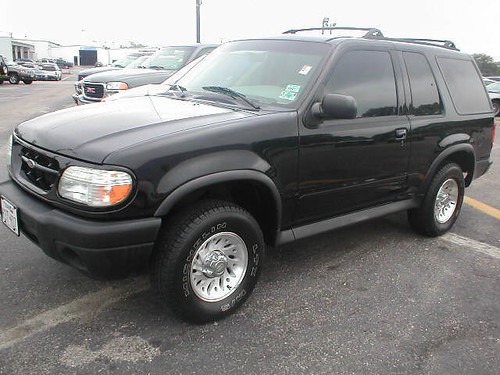
3. **Using Quality Replacement Parts**The strategic decision to utilize high-quality replacement parts when servicing your Ford Explorer profoundly influences its long-term performance and durability. While the temptation to opt for inexpensive components can be strong, especially for older vehicles, low-quality parts invariably exhibit accelerated wear and are far more prone to failure under operational stresses. This is a critical aspect of ensuring sustained reliability and safety, not merely a matter of preference.
A prime illustration can be observed with brake pads. Cheaper versions are notorious for squealing, uneven wear, or even damaging rotors. In contrast, high-grade brake pads are engineered not only to endure longer but also to deliver superior stopping power, a critical safety feature. They also safeguard other vital brake components. The same principle extends to suspension parts like ball joints, control arms, and bushings, where budget parts tend to wear quickly under an SUV’s weight and road stress. Explorers used for towing or off-road driving benefit immensely from durable aftermarket or OEM (original equipment manufacturer) parts.
Engine components like spark plugs, ignition coils, and sensors similarly benefit from superior quality; cheaper parts can fail without warning, causing drivability issues like rough idling or poor fuel economy. Quality filters for oil, fuel, or air also effectively exclude dirt and debris from key systems, extending their lifespan. Owners who consistently invest in the correct, high-quality parts are most likely to see their Explorers confidently surpass the 250,000-mile mark. It’s about making judicious, informed investments in parts that perform as expected and avoid premature re-replacement, ensuring peace of mind and less hassle.
Car Model Information: 2021 Ford Explorer XLT
Name: Ford Explorer
Caption: Sixth-generation Ford Explorer
Manufacturer: Ford Motor Company
Production: 1990–present
ModelYears: 1991–present
Class: unbulleted list
Chassis: unbulleted list
Predecessor: Ford Bronco II
Successor: Ford Territory (Australia)
Categories: 2000s cars, 2010s cars, 2020s cars, All-wheel-drive vehicles, All Wikipedia articles in need of updating
Summary: The Ford Explorer is a range of SUVs manufactured by the Ford Motor Company since the 1991 model year. The first five-door SUV produced by Ford, the Explorer, was introduced as a replacement for the three-door Bronco II. As with the Ford Ranger, the model line derives its name from a trim package previously offered on Ford F-Series pickup trucks. As of 2020, the Explorer became the best-selling SUV in the American market.
Currently in its sixth generation, the Explorer has featured a five-door wagon body style since its 1991 introduction. During the first two generations, the model line included a three-door wagon (directly replacing the Bronco II). The Ford Explorer Sport Trac is a crew-cab mid-size pickup derived from the second-generation Explorer. The fifth and sixth generations of the Explorer have been produced as the Ford Police Interceptor Utility (replacing both the Ford Crown Victoria Police Interceptor and the Ford Police Interceptor Sedan).
The Explorer is slotted between the Ford Edge and Ford Expedition within North America’s current Ford SUV range. The model line has undergone rebadging several times, with Mazda, Mercury, and Lincoln each selling derivative variants. Currently, Lincoln markets a luxury version of the Explorer as the Lincoln Aviator.
For the North American market, the first four generations of the Explorer were produced by Ford at its Louisville Assembly Plant (Louisville, Kentucky) and its now-closed St. Louis Assembly Plant (Hazelwood, Missouri). Ford currently assembles the Explorer alongside the Lincoln Aviator and the Police Interceptor Utility at its Chicago Assembly Plant (Chicago, Illinois).
Get more information about: Ford Explorer
Buying a high-performing used car >>>
Brand: Ford Model: Explorer
Price: $25,595 Mileage: 42,720 mi.
Read more about: Driving Strong Past 150,000 Miles: 10 Transmission Traps to Avoid for Truck Longevity

4. **Keeping the Undercarriage Clean**Rust stands as one of the most insidious destroyers of any high-mileage vehicle, and the Ford Explorer is certainly not immune. One of the most profoundly effective strategies for safeguarding the crucial frame, vital brake lines, and delicate suspension components is the consistent practice of keeping the undercarriage meticulously clean. Road salt, corrosive mud, and pervasive grime accumulate beneath the vehicle, initiating a relentless process of eating away at metal components over extended periods. For Explorer owners residing in regions experiencing severe winters, regular underbody washing is absolutely essential, particularly throughout the snow season.
Even during warmer months, off-road adventures or routine travel on unpaved gravel roads can lead to a significant buildup of debris, which traps moisture. Moisture combined with sufficient time inevitably leads to rust. While rust might initially seem like an aesthetic concern, its unchecked progression will fundamentally compromise the structural integrity of critical parts. Rusted brake lines can rupture, corroded exhaust pipes can leak, and a severely rusted frame can render the vehicle unsafe, drastically shortening its functional life. Early detection and treatment are paramount.
Applying an undercoating or a specialized rust inhibitor is another proactive measure many long-term Explorer owners embrace. While not a one-time solution, it establishes a robust protective barrier that significantly impedes oxidation. Parking habits also play a role; parking over grass or bare dirt allows moisture to rise and condense upon the undercarriage. Conversely, consistently parking on gravel or paved surfaces helps to maintain a drier underside. This often-overlooked area is where some of the most expensive and damaging problems can silently begin. For off-road Explorers, a thorough hose-down after each outing effectively dislodges trapped debris and salt deposits.
Car Model Information: 2021 Ford Explorer XLT
Name: Ford Explorer
Caption: Sixth-generation Ford Explorer
Manufacturer: Ford Motor Company
Production: 1990–present
ModelYears: 1991–present
Class: unbulleted list
Chassis: unbulleted list
Predecessor: Ford Bronco II
Successor: Ford Territory (Australia)
Categories: 2000s cars, 2010s cars, 2020s cars, All-wheel-drive vehicles, All Wikipedia articles in need of updating
Summary: The Ford Explorer is a range of SUVs manufactured by the Ford Motor Company since the 1991 model year. The first five-door SUV produced by Ford, the Explorer, was introduced as a replacement for the three-door Bronco II. As with the Ford Ranger, the model line derives its name from a trim package previously offered on Ford F-Series pickup trucks. As of 2020, the Explorer became the best-selling SUV in the American market.
Currently in its sixth generation, the Explorer has featured a five-door wagon body style since its 1991 introduction. During the first two generations, the model line included a three-door wagon (directly replacing the Bronco II). The Ford Explorer Sport Trac is a crew-cab mid-size pickup derived from the second-generation Explorer. The fifth and sixth generations of the Explorer have been produced as the Ford Police Interceptor Utility (replacing both the Ford Crown Victoria Police Interceptor and the Ford Police Interceptor Sedan).
The Explorer is slotted between the Ford Edge and Ford Expedition within North America’s current Ford SUV range. The model line has undergone rebadging several times, with Mazda, Mercury, and Lincoln each selling derivative variants. Currently, Lincoln markets a luxury version of the Explorer as the Lincoln Aviator.
For the North American market, the first four generations of the Explorer were produced by Ford at its Louisville Assembly Plant (Louisville, Kentucky) and its now-closed St. Louis Assembly Plant (Hazelwood, Missouri). Ford currently assembles the Explorer alongside the Lincoln Aviator and the Police Interceptor Utility at its Chicago Assembly Plant (Chicago, Illinois).
Get more information about: Ford Explorer
Buying a high-performing used car >>>
Brand: Ford Model: Explorer
Price: $25,595 Mileage: 42,720 mi.
Read more about: The Roadblock Rundown: 12 Common Reasons Your Custom Classic Car Build Might Fail Inspection – And How to Ace It

5. **Maintaining a Consistent Tire and Wheel Care Routine**Tires are unequivocally among the most frequently overlooked components of any vehicle when assessing its long-term longevity, yet their role is absolutely pivotal in sustaining the safety, comfort, and even the operational lifespan of your Ford Explorer. Proper and consistent tire maintenance ensures that the vehicle handles optimally across all driving conditions, profoundly reduces the rate of wear on critical suspension components, and actively works to keep fuel efficiency at its peak. Worn or improperly inflated tires can induce uneven stress distribution across vital parts such as wheel bearings, ball joints, and shocks, predictably leading to their premature failure.
Routine tire rotation stands as an absolutely essential practice for promoting uniform tread wear. Given that front tires on an Explorer typically bear more weight and are subjected to different stresses, rotating them every 5,000 to 7,000 miles is crucial for balancing wear patterns. This practice not only significantly extends tire life but also dramatically reduces the likelihood of experiencing undesirable handling problems, such as the vehicle pulling to one side or exhibiting excessive vibration. Many owners who diligently rotate their tires report their Explorers feel more stable and comfortable, even after substantial mileage.
Equally vital for both tire and overall vehicle longevity are the practices of balancing the wheels and accurately aligning the suspension. Unbalanced tires or misaligned wheels are notorious for inducing vibrations that can accelerate the wear rate of both the tires and various suspension components quicker than normal. Misalignment can also cause the Explorer to pull to one side, which can be dangerous at higher speeds. Scheduling alignment checks annually, or whenever uneven tire wear is noticed, is a non-negotiable step to keep the vehicle operating safely and to significantly reduce the risk of expensive suspension repairs.
Finally, the importance of regular visual inspections for any form of tire damage—be it cuts, unusual bulges, or indications of uneven tread wear—cannot be overstated. Tires are the singular point of contact between your Explorer and the road, meaning any damage directly impacts the entire vehicle’s performance and, more critically, its safety profile. Maintaining correct tire pressure, strictly adhering to Ford’s specific recommendations, also plays a profound role in longevity. This prevents uneven wear and excessive heat generation, protecting the rubber compound over time.
Read more about: Decoding the Dreaded Oil Guzzle: 9 Critical Engine Issues That Emerge Beyond 80,000 Miles

6. **Addressing Engine and Transmission Issues Early**One of the most profound determinants of a Ford Explorer’s ability to reliably surpass 250,000 miles lies in the promptness with which owners address any emerging engine and transmission issues. These two interconnected systems fundamentally constitute the heart of the vehicle, and any problems, no matter how seemingly minor, that are left unattended often escalate with alarming rapidity. This escalation invariably leads to exceedingly costly repairs or, in the worst-case scenario, total system failure, rendering the vehicle inoperable. It is a common tendency for individuals to overlook subtle indicators, but taking immediate, decisive action can be crucial.
For the engine, diligent observation of any indications of oil leaks, the presence of unusual mechanical noises, or a discernible drop in performance can serve as critical early warnings. Even small oil leaks, if consistently ignored, can lead to unexpected and dangerous drops in oil levels, which in turn cause increased friction and accelerated wear. Furthermore, issues like intermittent misfires, a perpetually rough idle, or noticeable hesitation during acceleration can be clear indicators of spark plug degradation, fuel delivery problems, or malfunctions within crucial sensors. Addressing these promptly ensures the engine operates with maximum efficiency, simultaneously averting damage to exorbitantly expensive components.
Transmission care is of parallel vitality, especially given that some earlier Ford Explorer models have been associated with specific transmission concerns. Regular inspection and timely changes of transmission fluid are absolutely essential for preventing both overheating and the wear and tear on the intricate internal components. Should the transmission begin to exhibit symptoms such as slipping between gears, noticeable hesitation during shifts, or the manifestation of grinding noises, immediate and expert diagnosis becomes paramount. Many drivers who have propelled their Explorers beyond the 250,000-mile mark attribute their success to a proactive approach to transmission maintenance, including fluid flushes, filter replacements, or even professional rebuilding when deemed necessary.
It is an undeniable truth that engine and transmission repairs can often be financially demanding; however, these expenditures must be viewed not as mere costs but as essential investments in the vehicle’s enduring longevity. Procrastinating on these repairs frequently results in substantial collateral damage. By strictly adhering to scheduled service intervals, meticulously monitoring fluid conditions, and taking all abnormalities with the utmost seriousness, an Explorer is afforded the best possible chance to achieve impressive high mileage without succumbing to catastrophic mechanical failures.
Car Model Information: 2021 Ford Explorer XLT
Name: Ford Explorer
Caption: Sixth-generation Ford Explorer
Manufacturer: Ford Motor Company
Production: 1990–present
ModelYears: 1991–present
Class: unbulleted list
Chassis: unbulleted list
Predecessor: Ford Bronco II
Successor: Ford Territory (Australia)
Categories: 2000s cars, 2010s cars, 2020s cars, All-wheel-drive vehicles, All Wikipedia articles in need of updating
Summary: The Ford Explorer is a range of SUVs manufactured by the Ford Motor Company since the 1991 model year. The first five-door SUV produced by Ford, the Explorer, was introduced as a replacement for the three-door Bronco II. As with the Ford Ranger, the model line derives its name from a trim package previously offered on Ford F-Series pickup trucks. As of 2020, the Explorer became the best-selling SUV in the American market.
Currently in its sixth generation, the Explorer has featured a five-door wagon body style since its 1991 introduction. During the first two generations, the model line included a three-door wagon (directly replacing the Bronco II). The Ford Explorer Sport Trac is a crew-cab mid-size pickup derived from the second-generation Explorer. The fifth and sixth generations of the Explorer have been produced as the Ford Police Interceptor Utility (replacing both the Ford Crown Victoria Police Interceptor and the Ford Police Interceptor Sedan).
The Explorer is slotted between the Ford Edge and Ford Expedition within North America’s current Ford SUV range. The model line has undergone rebadging several times, with Mazda, Mercury, and Lincoln each selling derivative variants. Currently, Lincoln markets a luxury version of the Explorer as the Lincoln Aviator.
For the North American market, the first four generations of the Explorer were produced by Ford at its Louisville Assembly Plant (Louisville, Kentucky) and its now-closed St. Louis Assembly Plant (Hazelwood, Missouri). Ford currently assembles the Explorer alongside the Lincoln Aviator and the Police Interceptor Utility at its Chicago Assembly Plant (Chicago, Illinois).
Get more information about: Ford Explorer
Buying a high-performing used car >>>
Brand: Ford Model: Explorer
Price: $25,595 Mileage: 42,720 mi.
Read more about: Driving Strong Past 150,000 Miles: 10 Transmission Traps to Avoid for Truck Longevity
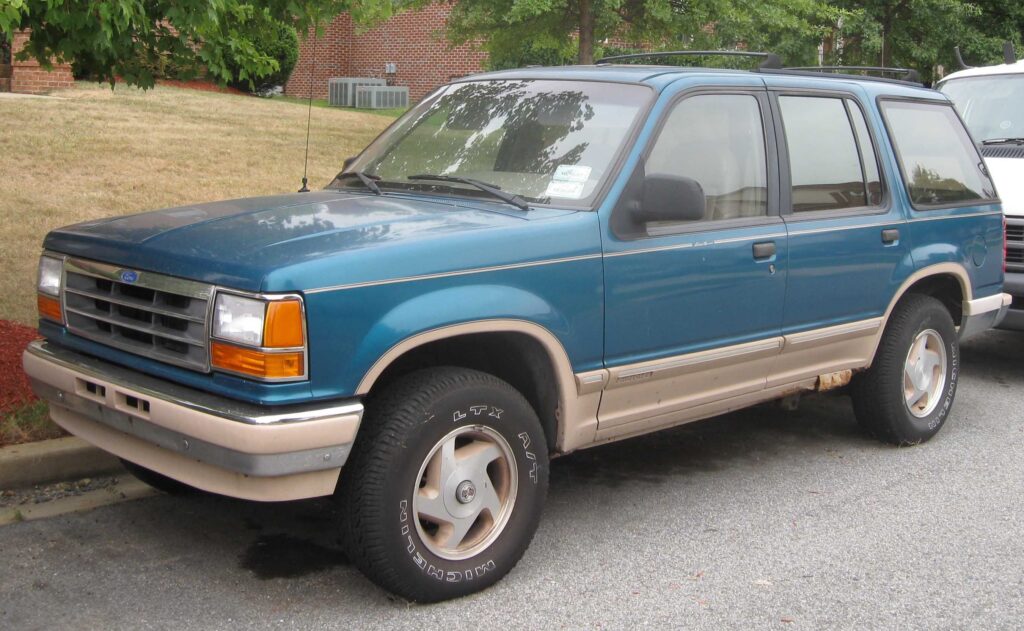
7. **Caring for the Cooling System**The cooling system stands as one of the most critical, yet frequently neglected, elements within any vehicle’s comprehensive longevity strategy. For the Ford Explorer, the meticulous management of engine temperature is absolutely crucial to prevent the perils of overheating, a condition that can swiftly lead to devastating consequences such as head gasket failures, the warping of cylinders, and in severe cases, outright engine seizure. This intricate system encompasses several vital components: the radiator, the water pump, the thermostat, a network of hoses, and the coolant fluid itself. Each of these elements demands regular inspection and precise maintenance.
Coolant, often underestimated by a considerable number of drivers, progressively loses its essential protective qualities over time. Its function extends far beyond merely cooling the engine; it also contains a specialized blend of additives meticulously designed to prevent the insidious processes of rust and corrosion from occurring within the radiator and the engine block. Performing a comprehensive flush of the coolant system every 2 to 3 years, or strictly in accordance with the manufacturer’s specific recommendations, is paramount. This procedure replaces degraded, old fluid with fresh antifreeze, which significantly enhances heat transfer capabilities and bolsters resistance against corrosion. Neglecting this vital task invariably leads to detrimental buildup, diminishing effectiveness and elevating the risk of engine overheating.
The radiator and the water pump must similarly be maintained in impeccable working order. Radiators are susceptible to developing leaks or becoming clogged with various debris, both of which severely impair their crucial cooling efficiency. Water pumps, which are exclusively responsible for the critical circulation of coolant throughout the engine, contain bearings and seals that are inherently subject to wear and degradation over time. Early indications of a failing water pump often include coolant leaks or a high-pitched whining noise from the pump’s vicinity. Replacing a water pump proactively at the first signs of failure is a prudent measure that effectively prevents more extensive and costly engine damage, while also averting the inconvenience and danger of being stranded due to a complete cooling system failure.
Thermostats play a precise regulatory role in controlling coolant flow, meticulously ensuring that the engine rapidly attains its optimal operating temperature and consistently maintains it. A thermostat that becomes stuck can cause the engine to perpetually run either too hot or too cold, both scenarios leading to increased wear on internal components or significantly diminished fuel economy. Replacing the thermostat as an integral part of regular cooling system maintenance, or immediately upon the appearance of any overheating symptoms, is a fundamental practice for preserving optimal engine health. Drivers who diligently prioritize comprehensive cooling system care effectively circumvent overheating catastrophes, a primary factor behind the impressive capability of many Ford Explorers to confidently surpass the 250,000-mile mark with remarkable reliability.
Car Model Information: 2021 Ford Explorer XLT
Name: Ford Explorer
Caption: Sixth-generation Ford Explorer
Manufacturer: Ford Motor Company
Production: 1990–present
ModelYears: 1991–present
Class: unbulleted list
Chassis: unbulleted list
Predecessor: Ford Bronco II
Successor: Ford Territory (Australia)
Categories: 2000s cars, 2010s cars, 2020s cars, All-wheel-drive vehicles, All Wikipedia articles in need of updating
Summary: The Ford Explorer is a range of SUVs manufactured by the Ford Motor Company since the 1991 model year. The first five-door SUV produced by Ford, the Explorer, was introduced as a replacement for the three-door Bronco II. As with the Ford Ranger, the model line derives its name from a trim package previously offered on Ford F-Series pickup trucks. As of 2020, the Explorer became the best-selling SUV in the American market.
Currently in its sixth generation, the Explorer has featured a five-door wagon body style since its 1991 introduction. During the first two generations, the model line included a three-door wagon (directly replacing the Bronco II). The Ford Explorer Sport Trac is a crew-cab mid-size pickup derived from the second-generation Explorer. The fifth and sixth generations of the Explorer have been produced as the Ford Police Interceptor Utility (replacing both the Ford Crown Victoria Police Interceptor and the Ford Police Interceptor Sedan).
The Explorer is slotted between the Ford Edge and Ford Expedition within North America’s current Ford SUV range. The model line has undergone rebadging several times, with Mazda, Mercury, and Lincoln each selling derivative variants. Currently, Lincoln markets a luxury version of the Explorer as the Lincoln Aviator.
For the North American market, the first four generations of the Explorer were produced by Ford at its Louisville Assembly Plant (Louisville, Kentucky) and its now-closed St. Louis Assembly Plant (Hazelwood, Missouri). Ford currently assembles the Explorer alongside the Lincoln Aviator and the Police Interceptor Utility at its Chicago Assembly Plant (Chicago, Illinois).
Get more information about: Ford Explorer
Buying a high-performing used car >>>
Brand: Ford Model: Explorer
Price: $25,595 Mileage: 42,720 mi.
Read more about: Unearthing 15 Unsung 90s Sedans: Reliable Transport Gems for Today’s Commuters
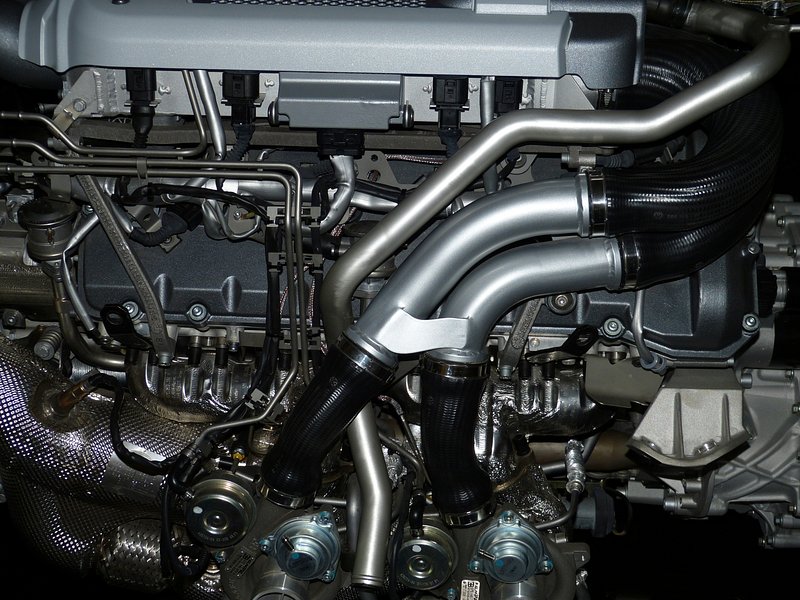
8. **Paying Attention to the Exhaust System**The exhaust system, though often perceived as less critical than the engine or transmission, significantly impacts your Ford Explorer’s overall performance, fuel efficiency, and emissions control. For an Explorer to reliably surpass the 250,000-mile mark, consistent attention to this system is crucial. Leaks, extensive rust, or any damage to its components can lead to detrimental backpressure issues, diminishing engine power and accelerating wear on internal engine parts. Exhaust leaks frequently manifest as small holes or cracks, disrupting oxygen sensors and causing the engine control unit (ECU) to miscalculate the air-fuel mixture. This results in rough running, poor fuel economy, and increased emissions.
Rust poses a pervasive threat to the exhaust system, especially for Explorers in regions with salty roads or high humidity. Components like the muffler, catalytic converter, and exhaust pipes are exposed to moisture and heat, accelerating corrosion. Regular inspections under the vehicle, particularly after winter, are essential for identifying rust spots before they develop into holes or cause parts to detach. Replacing rusted sections or upgrading to high-quality aftermarket parts can substantially extend the system’s operational lifespan and bolster vehicle reliability.
The catalytic converter and oxygen sensors also merit specialized attention. While catalytic converters are generally designed for longevity, they can become clogged or damaged due to underlying engine problems or contaminated fuel. Oxygen sensors, crucial for regulating the fuel mixture and managing emissions, wear out over time and typically necessitate replacement every 60,000 to 100,000 miles. Proper exhaust system maintenance is directly correlated with superior engine performance and is fundamental to ensuring your Explorer continues to run robustly through high mileage.
Car Model Information: 2021 Ford Explorer XLT
Name: Ford Explorer
Caption: Sixth-generation Ford Explorer
Manufacturer: Ford Motor Company
Production: 1990–present
ModelYears: 1991–present
Class: unbulleted list
Chassis: unbulleted list
Predecessor: Ford Bronco II
Successor: Ford Territory (Australia)
Categories: 2000s cars, 2010s cars, 2020s cars, All-wheel-drive vehicles, All Wikipedia articles in need of updating
Summary: The Ford Explorer is a range of SUVs manufactured by the Ford Motor Company since the 1991 model year. The first five-door SUV produced by Ford, the Explorer, was introduced as a replacement for the three-door Bronco II. As with the Ford Ranger, the model line derives its name from a trim package previously offered on Ford F-Series pickup trucks. As of 2020, the Explorer became the best-selling SUV in the American market.
Currently in its sixth generation, the Explorer has featured a five-door wagon body style since its 1991 introduction. During the first two generations, the model line included a three-door wagon (directly replacing the Bronco II). The Ford Explorer Sport Trac is a crew-cab mid-size pickup derived from the second-generation Explorer. The fifth and sixth generations of the Explorer have been produced as the Ford Police Interceptor Utility (replacing both the Ford Crown Victoria Police Interceptor and the Ford Police Interceptor Sedan).
The Explorer is slotted between the Ford Edge and Ford Expedition within North America’s current Ford SUV range. The model line has undergone rebadging several times, with Mazda, Mercury, and Lincoln each selling derivative variants. Currently, Lincoln markets a luxury version of the Explorer as the Lincoln Aviator.
For the North American market, the first four generations of the Explorer were produced by Ford at its Louisville Assembly Plant (Louisville, Kentucky) and its now-closed St. Louis Assembly Plant (Hazelwood, Missouri). Ford currently assembles the Explorer alongside the Lincoln Aviator and the Police Interceptor Utility at its Chicago Assembly Plant (Chicago, Illinois).
Get more information about: Ford Explorer
Buying a high-performing used car >>>
Brand: Ford Model: Explorer
Price: $25,595 Mileage: 42,720 mi.
Read more about: Beyond the Cramps: 12 Essential Colon Cancer Warning Signs, Including Those Affecting Your Appetite, You Should Never Ignore

9. **Staying Ahead on Suspension and Steering Repairs**The suspension and steering systems are absolutely paramount for ensuring safe handling, delivering a comfortable ride, and guaranteeing optimal drivability in any Ford Explorer. On a high-mileage vehicle, these intricately linked components are particularly susceptible to the cumulative effects of road imperfections, heavy loads, and normal aging. Proactively addressing any emerging issues within these systems is not merely about preserving the vehicle’s stability; it is a critical measure to prevent further damage that can rapidly escalate into exceedingly expensive repairs if left unaddressed.
Common suspension components, including shocks, struts, ball joints, and control arms, are inherently designed to wear out over time. Worn-out shocks lead to excessive vehicle bouncing, degraded braking performance, and accelerated, uneven tire wear. Similarly, ball joints and various bushings, if overlooked, can cause loose steering, audible clunking, and in extreme scenarios, completely break, resulting in a catastrophic loss of vehicular control. Regular inspections and immediate replacement of worn components are crucial steps to avert dangerous situations and mitigate costly, extensive repairs.
Parallel vigilance is required for the Explorer’s steering components, encompassing crucial parts such as tie rods, the steering rack, and the power steering pump. Any noticeable “play” in the steering wheel, persistent difficulty in turning, or unusual noises during steering maneuvers are clear indicators that a problem is developing. Maintaining these intricate parts in impeccable working order is fundamental to ensuring your Explorer handles with predictable precision and paramount safety. Long-term Explorer owners consistently report that replacing suspension and steering parts with high-quality components yields substantial dividends, translating into fewer problems and a more comfortable ride for many additional years and hundreds of thousands of miles.
Car Model Information: 2021 Ford Explorer XLT
Name: Ford Explorer
Caption: Sixth-generation Ford Explorer
Manufacturer: Ford Motor Company
Production: 1990–present
ModelYears: 1991–present
Class: unbulleted list
Chassis: unbulleted list
Predecessor: Ford Bronco II
Successor: Ford Territory (Australia)
Categories: 2000s cars, 2010s cars, 2020s cars, All-wheel-drive vehicles, All Wikipedia articles in need of updating
Summary: The Ford Explorer is a range of SUVs manufactured by the Ford Motor Company since the 1991 model year. The first five-door SUV produced by Ford, the Explorer, was introduced as a replacement for the three-door Bronco II. As with the Ford Ranger, the model line derives its name from a trim package previously offered on Ford F-Series pickup trucks. As of 2020, the Explorer became the best-selling SUV in the American market.
Currently in its sixth generation, the Explorer has featured a five-door wagon body style since its 1991 introduction. During the first two generations, the model line included a three-door wagon (directly replacing the Bronco II). The Ford Explorer Sport Trac is a crew-cab mid-size pickup derived from the second-generation Explorer. The fifth and sixth generations of the Explorer have been produced as the Ford Police Interceptor Utility (replacing both the Ford Crown Victoria Police Interceptor and the Ford Police Interceptor Sedan).
The Explorer is slotted between the Ford Edge and Ford Expedition within North America’s current Ford SUV range. The model line has undergone rebadging several times, with Mazda, Mercury, and Lincoln each selling derivative variants. Currently, Lincoln markets a luxury version of the Explorer as the Lincoln Aviator.
For the North American market, the first four generations of the Explorer were produced by Ford at its Louisville Assembly Plant (Louisville, Kentucky) and its now-closed St. Louis Assembly Plant (Hazelwood, Missouri). Ford currently assembles the Explorer alongside the Lincoln Aviator and the Police Interceptor Utility at its Chicago Assembly Plant (Chicago, Illinois).
Get more information about: Ford Explorer
Buying a high-performing used car >>>
Brand: Ford Model: Explorer
Price: $25,595 Mileage: 42,720 mi.
Read more about: 13 Essential Steps: A Lifehacker’s Guide to Choosing the Right Wheel Offset for Your Car

10. **Driving Habits That Preserve Longevity**Ultimately, the manner in which a Ford Explorer is driven constitutes a profoundly critical factor in its capacity to reach, and even surpass, the remarkable milestone of 250,000 miles. Aggressive driving behaviors—such as frequent, forceful accelerations, abrupt and harsh braking, and consistently towing loads that exceed the vehicle’s recommended limits—each contribute significantly to accelerated wear and tear on vital components including the engine, transmission, brakes, and suspension. Explorers that achieve exceptional longevity are almost invariably operated with smooth, deliberate, and conscientious driving habits, which effectively minimize undue strain on these complex and interconnected systems.
Consciously avoiding unnecessary engine idling, protracted warm-up periods, and an excessive number of short trips that prevent the engine from attaining its optimal operating temperature are all practices that greatly aid in preserving the drivetrain. Both engines and transmissions are engineered to perform most efficiently and with the least wear within specific, tightly controlled temperature ranges. Continually operating these systems when cold can exacerbate condensation buildup, encourage the formation of detrimental sludge, and inevitably increase wear on internal components, ultimately shortening their lifespan.
Effectively managing vehicle load represents another profoundly important factor in the quest for extended vehicle life. Systematically overloading the Explorer or towing more weight than its officially rated capacity can precipitate a cascade of detrimental issues, including severe overheating, accelerated transmission wear, and significant damage to the suspension. Drivers who remain acutely mindful of weight limits, distribute loads properly, maintain a moderate and consistent speed, and avoid excessively high engine RPMs further mitigate wear on both the engine and the transmission. This thoughtful approach, combined with consistent maintenance and quality parts, empowers the Explorer to confidently run strong for hundreds of thousands of miles.
Car Model Information: 2021 Ford Explorer XLT
Name: Ford Explorer
Caption: Sixth-generation Ford Explorer
Manufacturer: Ford Motor Company
Production: 1990–present
ModelYears: 1991–present
Class: unbulleted list
Chassis: unbulleted list
Predecessor: Ford Bronco II
Successor: Ford Territory (Australia)
Categories: 2000s cars, 2010s cars, 2020s cars, All-wheel-drive vehicles, All Wikipedia articles in need of updating
Summary: The Ford Explorer is a range of SUVs manufactured by the Ford Motor Company since the 1991 model year. The first five-door SUV produced by Ford, the Explorer, was introduced as a replacement for the three-door Bronco II. As with the Ford Ranger, the model line derives its name from a trim package previously offered on Ford F-Series pickup trucks. As of 2020, the Explorer became the best-selling SUV in the American market.
Currently in its sixth generation, the Explorer has featured a five-door wagon body style since its 1991 introduction. During the first two generations, the model line included a three-door wagon (directly replacing the Bronco II). The Ford Explorer Sport Trac is a crew-cab mid-size pickup derived from the second-generation Explorer. The fifth and sixth generations of the Explorer have been produced as the Ford Police Interceptor Utility (replacing both the Ford Crown Victoria Police Interceptor and the Ford Police Interceptor Sedan).
The Explorer is slotted between the Ford Edge and Ford Expedition within North America’s current Ford SUV range. The model line has undergone rebadging several times, with Mazda, Mercury, and Lincoln each selling derivative variants. Currently, Lincoln markets a luxury version of the Explorer as the Lincoln Aviator.
For the North American market, the first four generations of the Explorer were produced by Ford at its Louisville Assembly Plant (Louisville, Kentucky) and its now-closed St. Louis Assembly Plant (Hazelwood, Missouri). Ford currently assembles the Explorer alongside the Lincoln Aviator and the Police Interceptor Utility at its Chicago Assembly Plant (Chicago, Illinois).
Get more information about: Ford Explorer
Buying a high-performing used car >>>
Brand: Ford Model: Explorer
Price: $25,595 Mileage: 42,720 mi.
Read more about: Seriously, What Happened? A Deep Dive into 14 Once-Essential Car Features Drivers Don’t Miss Anymore!
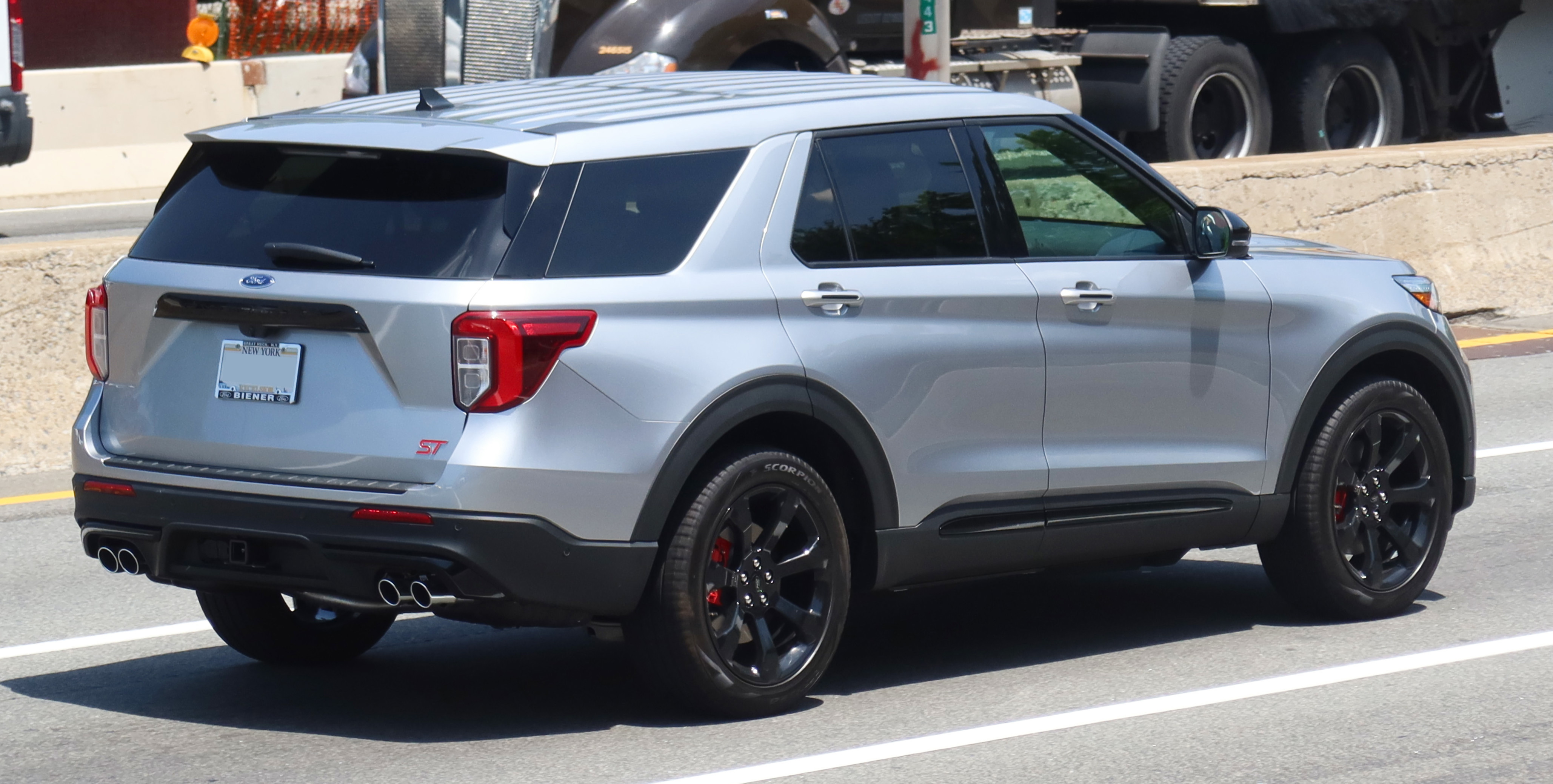
11. **Strategic Filter Replacements (Cabin and Engine Air Filters)**While seemingly small, the regular replacement of filters in your Ford Explorer plays an outsized role in preserving both interior comfort and critical engine performance, making it a strategic area of focus for high-mileage longevity. Beyond the oil filter, which is typically addressed during routine oil changes, both the cabin air filter and the engine air filter demand specific attention to ensure your vehicle breathes freely and effectively. These components are essential for maintaining a healthy operating environment for both occupants and the engine itself.
The cabin air filter is often overlooked, yet it is crucial for maintaining the air quality inside your Explorer. Ford recommends replacing this filter every 20,000 miles, and this simple swap provides immediate and noticeable benefits. A fresh cabin filter efficiently traps dust, pollen, pollutants, and other airborne particles, preventing them from entering the vehicle’s interior. This not only significantly improves the air quality you and your passengers breathe but also ensures your heating, ventilation, and air conditioning (HVAC) system operates efficiently, free from undue strain or clogs.
Equally vital for the health of your Explorer’s engine is the regular replacement of the engine air filter, a task typically recommended every 30,000 miles. This filter acts as the engine’s primary line of defense, preventing dirt, dust, and debris from entering the combustion chambers. A clean engine air filter is indispensable for promoting optimal fuel economy and sustaining peak engine performance. When an air filter becomes clogged, the engine has to work harder to draw in air, leading to reduced power, increased fuel consumption, and potentially premature wear on engine components. A clean filter ensures a consistent and adequate supply of clean air for efficient combustion and long-term engine health.
Car Model Information: 2021 Ford Explorer XLT
Name: Ford Explorer
Caption: Sixth-generation Ford Explorer
Manufacturer: Ford Motor Company
Production: 1990–present
ModelYears: 1991–present
Class: unbulleted list
Chassis: unbulleted list
Predecessor: Ford Bronco II
Successor: Ford Territory (Australia)
Categories: 2000s cars, 2010s cars, 2020s cars, All-wheel-drive vehicles, All Wikipedia articles in need of updating
Summary: The Ford Explorer is a range of SUVs manufactured by the Ford Motor Company since the 1991 model year. The first five-door SUV produced by Ford, the Explorer, was introduced as a replacement for the three-door Bronco II. As with the Ford Ranger, the model line derives its name from a trim package previously offered on Ford F-Series pickup trucks. As of 2020, the Explorer became the best-selling SUV in the American market.
Currently in its sixth generation, the Explorer has featured a five-door wagon body style since its 1991 introduction. During the first two generations, the model line included a three-door wagon (directly replacing the Bronco II). The Ford Explorer Sport Trac is a crew-cab mid-size pickup derived from the second-generation Explorer. The fifth and sixth generations of the Explorer have been produced as the Ford Police Interceptor Utility (replacing both the Ford Crown Victoria Police Interceptor and the Ford Police Interceptor Sedan).
The Explorer is slotted between the Ford Edge and Ford Expedition within North America’s current Ford SUV range. The model line has undergone rebadging several times, with Mazda, Mercury, and Lincoln each selling derivative variants. Currently, Lincoln markets a luxury version of the Explorer as the Lincoln Aviator.
For the North American market, the first four generations of the Explorer were produced by Ford at its Louisville Assembly Plant (Louisville, Kentucky) and its now-closed St. Louis Assembly Plant (Hazelwood, Missouri). Ford currently assembles the Explorer alongside the Lincoln Aviator and the Police Interceptor Utility at its Chicago Assembly Plant (Chicago, Illinois).
Get more information about: Ford Explorer
Buying a high-performing used car >>>
Brand: Ford Model: Explorer
Price: $25,595 Mileage: 42,720 mi.

12. **Spark Plug Specifics and Drive Belt Inspections**Precision ignition and reliable power transfer are fundamental to the enduring performance of any high-mileage Ford Explorer, making the timely service of spark plugs and diligent inspection of drive belts absolutely critical. These components, while small, have a monumental impact on engine efficiency, power delivery, and the continuous operation of essential accessories. Understanding the specific service intervals for different Explorer engine configurations is key to preventing costly malfunctions and maintaining peak performance.
For Explorers equipped with the efficient 2.3L EcoBoost engine, spark plug replacement becomes a necessary service around the 60,000-mile mark. These components are directly responsible for igniting the air-fuel mixture, and their degradation over time can lead to misfires, rough idling, reduced fuel economy, and a noticeable drop in engine power. Adhering to this specific replacement schedule for EcoBoost engines is particularly important due to their turbocharged nature placing higher demands on spark plugs, making them more susceptible to wear.
Owners of Explorers featuring the 3.3L V6 or 3.0L EcoBoost V6 engines will typically find their spark plug replacement interval scheduled for the 100,000-mile mark. At this significant milestone, it is also imperative to conduct a thorough inspection of all accessory drive belts for any signs of wear and tear. These belts drive critical components like the alternator, water pump, and power steering pump. Cracks, fraying, or excessive stretching indicate they are nearing the end of their service life and should be replaced to avoid sudden component failures. Timely replacement of spark plugs and vigilant inspection of drive belts are crucial for consistent engine operation and prolonged reliability.
Car Model Information: 2021 Ford Explorer XLT
Name: Ford Explorer
Caption: Sixth-generation Ford Explorer
Manufacturer: Ford Motor Company
Production: 1990–present
ModelYears: 1991–present
Class: unbulleted list
Chassis: unbulleted list
Predecessor: Ford Bronco II
Successor: Ford Territory (Australia)
Categories: 2000s cars, 2010s cars, 2020s cars, All-wheel-drive vehicles, All Wikipedia articles in need of updating
Summary: The Ford Explorer is a range of SUVs manufactured by the Ford Motor Company since the 1991 model year. The first five-door SUV produced by Ford, the Explorer, was introduced as a replacement for the three-door Bronco II. As with the Ford Ranger, the model line derives its name from a trim package previously offered on Ford F-Series pickup trucks. As of 2020, the Explorer became the best-selling SUV in the American market.
Currently in its sixth generation, the Explorer has featured a five-door wagon body style since its 1991 introduction. During the first two generations, the model line included a three-door wagon (directly replacing the Bronco II). The Ford Explorer Sport Trac is a crew-cab mid-size pickup derived from the second-generation Explorer. The fifth and sixth generations of the Explorer have been produced as the Ford Police Interceptor Utility (replacing both the Ford Crown Victoria Police Interceptor and the Ford Police Interceptor Sedan).
The Explorer is slotted between the Ford Edge and Ford Expedition within North America’s current Ford SUV range. The model line has undergone rebadging several times, with Mazda, Mercury, and Lincoln each selling derivative variants. Currently, Lincoln markets a luxury version of the Explorer as the Lincoln Aviator.
For the North American market, the first four generations of the Explorer were produced by Ford at its Louisville Assembly Plant (Louisville, Kentucky) and its now-closed St. Louis Assembly Plant (Hazelwood, Missouri). Ford currently assembles the Explorer alongside the Lincoln Aviator and the Police Interceptor Utility at its Chicago Assembly Plant (Chicago, Illinois).
Get more information about: Ford Explorer
Buying a high-performing used car >>>
Brand: Ford Model: Explorer
Price: $25,595 Mileage: 42,720 mi.
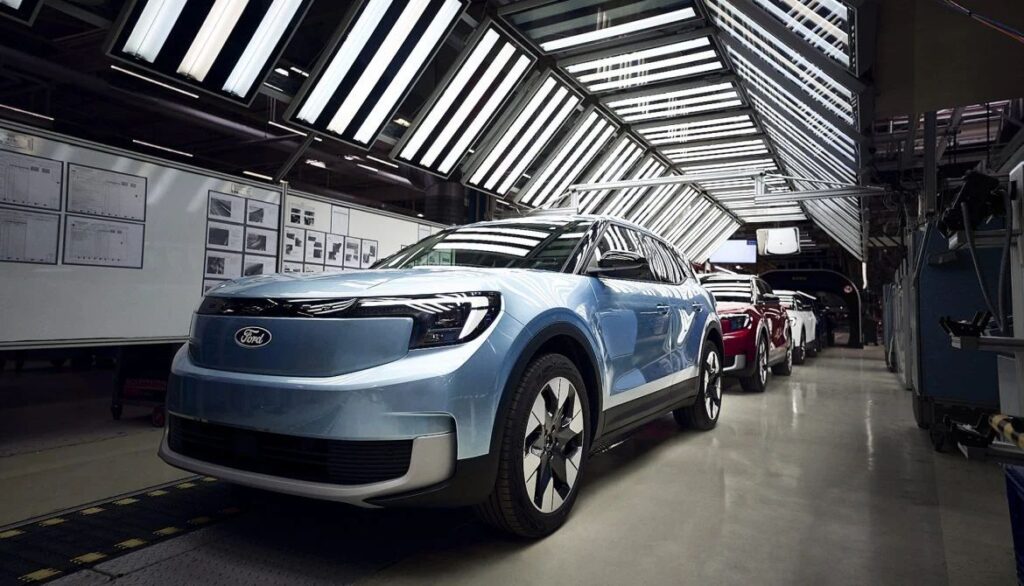
13. **Critical Brake Fluid Service**While oil changes and tire rotations are regular maintenance staples, brake fluid service is a critical, yet frequently overlooked, item that fundamentally impacts your Ford Explorer’s safety and braking performance. Unlike many other services tied to mileage, Ford specifically recommends changing your brake fluid every three years, regardless of how many miles you’ve accumulated. This recommendation underscores the fluid’s inherent degradation over time, not just through use.
Brake fluid is hydroscopic, meaning it readily absorbs moisture from the atmosphere. This absorbed moisture significantly lowers the fluid’s boiling point. Under conditions of heavy braking, the fluid can get hot enough to boil, forming compressible steam bubbles in the brake lines. The result is a spongy or unresponsive brake pedal, drastically compromising your ability to stop the vehicle effectively and safely. Furthermore, moisture in the fluid can lead to internal corrosion within the brake system’s metal components, causing expensive damage and component failure over time.
A professional brake fluid flush removes the old, moisture-laden fluid and replaces it with fresh, high-quality fluid, ensuring the system operates with its intended hydraulic integrity and maximum corrosion protection. This service requires specialized equipment, making it best left to experienced professionals. Proactive brake fluid service is a cornerstone of maintaining your Explorer’s safety features, preventing premature component wear, and ensuring confident stopping power for the long haul.
Car Model Information: 2021 Ford Explorer XLT
Name: Ford Explorer
Caption: Sixth-generation Ford Explorer
Manufacturer: Ford Motor Company
Production: 1990–present
ModelYears: 1991–present
Class: unbulleted list
Chassis: unbulleted list
Predecessor: Ford Bronco II
Successor: Ford Territory (Australia)
Categories: 2000s cars, 2010s cars, 2020s cars, All-wheel-drive vehicles, All Wikipedia articles in need of updating
Summary: The Ford Explorer is a range of SUVs manufactured by the Ford Motor Company since the 1991 model year. The first five-door SUV produced by Ford, the Explorer, was introduced as a replacement for the three-door Bronco II. As with the Ford Ranger, the model line derives its name from a trim package previously offered on Ford F-Series pickup trucks. As of 2020, the Explorer became the best-selling SUV in the American market.
Currently in its sixth generation, the Explorer has featured a five-door wagon body style since its 1991 introduction. During the first two generations, the model line included a three-door wagon (directly replacing the Bronco II). The Ford Explorer Sport Trac is a crew-cab mid-size pickup derived from the second-generation Explorer. The fifth and sixth generations of the Explorer have been produced as the Ford Police Interceptor Utility (replacing both the Ford Crown Victoria Police Interceptor and the Ford Police Interceptor Sedan).
The Explorer is slotted between the Ford Edge and Ford Expedition within North America’s current Ford SUV range. The model line has undergone rebadging several times, with Mazda, Mercury, and Lincoln each selling derivative variants. Currently, Lincoln markets a luxury version of the Explorer as the Lincoln Aviator.
For the North American market, the first four generations of the Explorer were produced by Ford at its Louisville Assembly Plant (Louisville, Kentucky) and its now-closed St. Louis Assembly Plant (Hazelwood, Missouri). Ford currently assembles the Explorer alongside the Lincoln Aviator and the Police Interceptor Utility at its Chicago Assembly Plant (Chicago, Illinois).
Get more information about: Ford Explorer
Buying a high-performing used car >>>
Brand: Ford Model: Explorer
Price: $25,595 Mileage: 42,720 mi.
Read more about: Driving Strong Past 150,000 Miles: 10 Transmission Traps to Avoid for Truck Longevity
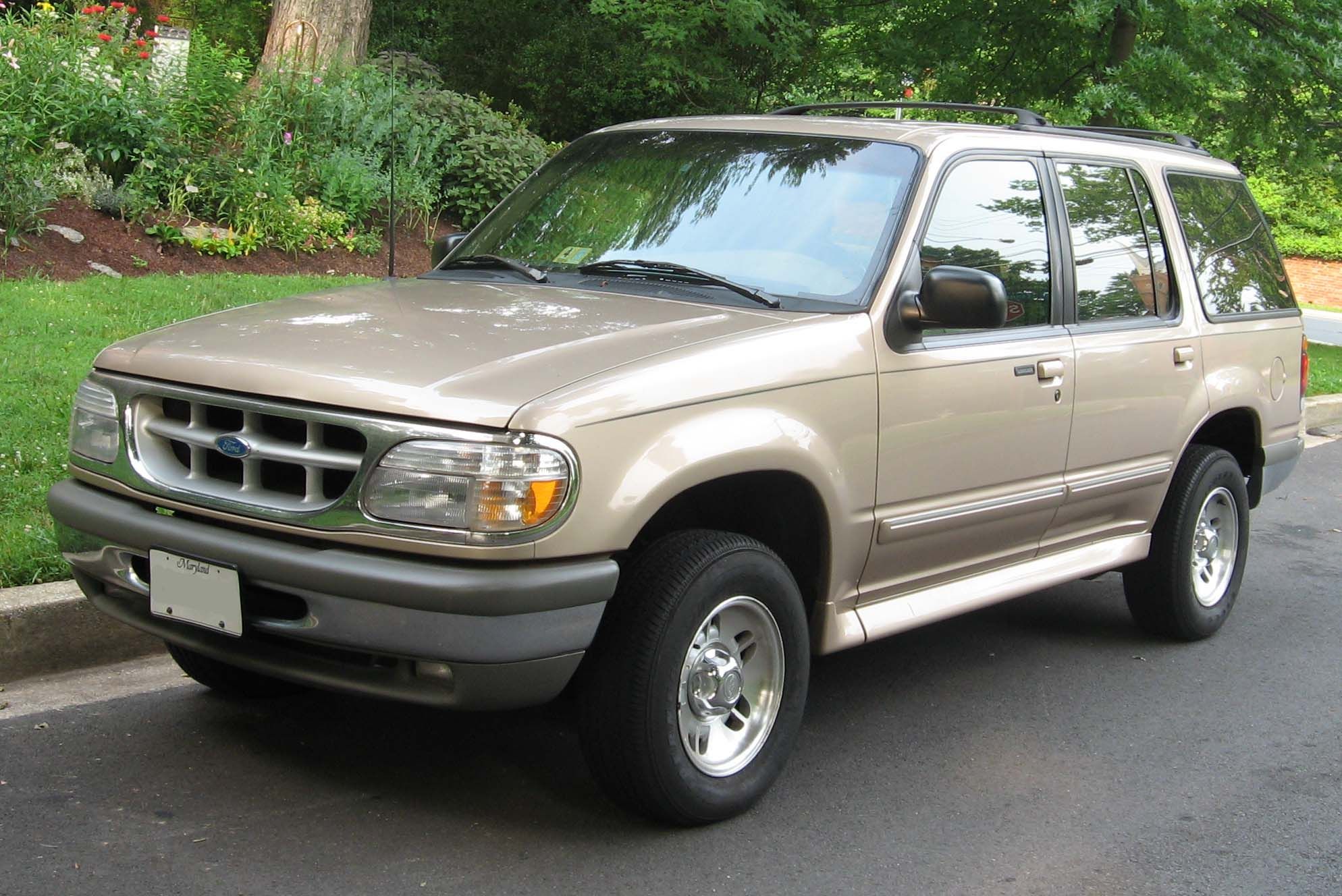
14. **Specialized AWD System Care (PTU Service)**For Ford Explorer owners equipped with the highly capable all-wheel-drive (AWD) system, a specialized and often underestimated maintenance item is the Power Transfer Unit (PTU) service. The PTU is a crucial component that distributes power from the transmission to the rear wheels, enabling your Explorer to handle diverse driving conditions, from slippery roads to light off-road adventures. Ensuring its proper function is paramount for your AWD system’s integrity and performance.
While the official Ford maintenance schedule might not explicitly list the PTU fluid service as a frequent requirement, many experienced technicians and long-term Explorer owners strongly recommend a more proactive approach. Due to the PTU’s design and its operational environment, it is prone to generating significant heat, which can rapidly degrade its internal lubricating fluid. This accelerated degradation can lead to premature wear of internal gears and bearings, causing costly problems down the road.
Consequently, the consensus among experts is to service the PTU fluid every 30,000 miles. This preventive maintenance involves draining the old, often burnt and contaminated, fluid and replacing it with fresh, specified lubricant. By doing so, you effectively mitigate the risk of overheating and reduce friction within the unit, significantly extending the lifespan of this vital drivetrain component. Ignoring this service can lead to PTU failure, an extremely expensive repair that can render your AWD system inoperable, making proactive PTU care a wise investment against major repairs.
Car Model Information: 2021 Ford Explorer XLT
Name: Ford Explorer
Caption: Sixth-generation Ford Explorer
Manufacturer: Ford Motor Company
Production: 1990–present
ModelYears: 1991–present
Class: unbulleted list
Chassis: unbulleted list
Predecessor: Ford Bronco II
Successor: Ford Territory (Australia)
Categories: 2000s cars, 2010s cars, 2020s cars, All-wheel-drive vehicles, All Wikipedia articles in need of updating
Summary: The Ford Explorer is a range of SUVs manufactured by the Ford Motor Company since the 1991 model year. The first five-door SUV produced by Ford, the Explorer, was introduced as a replacement for the three-door Bronco II. As with the Ford Ranger, the model line derives its name from a trim package previously offered on Ford F-Series pickup trucks. As of 2020, the Explorer became the best-selling SUV in the American market.
Currently in its sixth generation, the Explorer has featured a five-door wagon body style since its 1991 introduction. During the first two generations, the model line included a three-door wagon (directly replacing the Bronco II). The Ford Explorer Sport Trac is a crew-cab mid-size pickup derived from the second-generation Explorer. The fifth and sixth generations of the Explorer have been produced as the Ford Police Interceptor Utility (replacing both the Ford Crown Victoria Police Interceptor and the Ford Police Interceptor Sedan).
The Explorer is slotted between the Ford Edge and Ford Expedition within North America’s current Ford SUV range. The model line has undergone rebadging several times, with Mazda, Mercury, and Lincoln each selling derivative variants. Currently, Lincoln markets a luxury version of the Explorer as the Lincoln Aviator.
For the North American market, the first four generations of the Explorer were produced by Ford at its Louisville Assembly Plant (Louisville, Kentucky) and its now-closed St. Louis Assembly Plant (Hazelwood, Missouri). Ford currently assembles the Explorer alongside the Lincoln Aviator and the Police Interceptor Utility at its Chicago Assembly Plant (Chicago, Illinois).
Get more information about: Ford Explorer
Buying a high-performing used car >>>
Brand: Ford Model: Explorer
Price: $25,595 Mileage: 42,720 mi.

15. **The Strategic Value of Meticulous Maintenance Records**As your Ford Explorer embarks on its journey toward and beyond 250,000 miles, meticulously kept maintenance records become an invaluable asset. These records provide a comprehensive, verifiable history of your vehicle’s care, offering immense benefits from enhanced resale value to critical assistance in diagnosing future problems. They are tangible evidence of your commitment to the Explorer’s longevity and health, offering peace of mind to both you and any potential future owners.
Detailed maintenance records serve several practical purposes. Firstly, they significantly boost your Explorer’s resale value, as prospective buyers value a transparent, well-documented service history. Secondly, these records are indispensable for accurately diagnosing problems. Mechanics can quickly review past services and repairs, providing crucial context to pinpoint new issues more efficiently and accurately, saving both time and diagnostic costs.
In today’s digital age, keeping detailed records is simpler than ever. Beyond traditional paper receipts, leveraging your smartphone to photograph maintenance receipts immediately after service is an excellent method. These digital images can then be easily stored in cloud services, email folders, or dedicated car maintenance apps, ensuring they are always accessible and immune to loss or damage. This disciplined practice empowers you to respond to warning signs with informed precision, giving your Ford Explorer the best chance to endure and thrive well past the quarter-million-mile mark.
Car Model Information: 2021 Ford Explorer XLT
Name: Ford Explorer
Caption: Sixth-generation Ford Explorer
Manufacturer: Ford Motor Company
Production: 1990–present
ModelYears: 1991–present
Class: unbulleted list
Chassis: unbulleted list
Predecessor: Ford Bronco II
Successor: Ford Territory (Australia)
Categories: 2000s cars, 2010s cars, 2020s cars, All-wheel-drive vehicles, All Wikipedia articles in need of updating
Summary: The Ford Explorer is a range of SUVs manufactured by the Ford Motor Company since the 1991 model year. The first five-door SUV produced by Ford, the Explorer, was introduced as a replacement for the three-door Bronco II. As with the Ford Ranger, the model line derives its name from a trim package previously offered on Ford F-Series pickup trucks. As of 2020, the Explorer became the best-selling SUV in the American market.
Currently in its sixth generation, the Explorer has featured a five-door wagon body style since its 1991 introduction. During the first two generations, the model line included a three-door wagon (directly replacing the Bronco II). The Ford Explorer Sport Trac is a crew-cab mid-size pickup derived from the second-generation Explorer. The fifth and sixth generations of the Explorer have been produced as the Ford Police Interceptor Utility (replacing both the Ford Crown Victoria Police Interceptor and the Ford Police Interceptor Sedan).
The Explorer is slotted between the Ford Edge and Ford Expedition within North America’s current Ford SUV range. The model line has undergone rebadging several times, with Mazda, Mercury, and Lincoln each selling derivative variants. Currently, Lincoln markets a luxury version of the Explorer as the Lincoln Aviator.
For the North American market, the first four generations of the Explorer were produced by Ford at its Louisville Assembly Plant (Louisville, Kentucky) and its now-closed St. Louis Assembly Plant (Hazelwood, Missouri). Ford currently assembles the Explorer alongside the Lincoln Aviator and the Police Interceptor Utility at its Chicago Assembly Plant (Chicago, Illinois).
Get more information about: Ford Explorer
Buying a high-performing used car >>>
Brand: Ford Model: Explorer
Price: $25,595 Mileage: 42,720 mi.
Read more about: Navigating the Surge: 12 Key Reasons Your Car Insurance Rates Are Skyrocketing in Today’s Market
Bringing your Ford Explorer to such impressive mileage isn’t just about sticking to a schedule; it’s about fostering a relationship built on vigilance, proactive care, and a deep understanding of its needs. Every decision, from choosing quality parts to adjusting your driving style, contributes to its enduring strength. By embracing these comprehensive maintenance strategies—from the visible care of its exterior to the intricate attention paid to its internal systems—you’re not merely maintaining a vehicle; you’re safeguarding an investment that delivers safety, capability, and unwavering reliability for every journey ahead.



